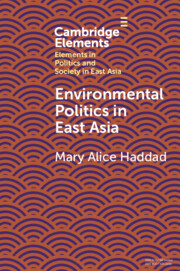Element contents
Environmental Politics in East Asia
Published online by Cambridge University Press: 21 September 2023
Summary
- Type
- Element
- Information
- Online ISBN: 9781108966085Publisher: Cambridge University PressPrint publication: 21 December 2023



